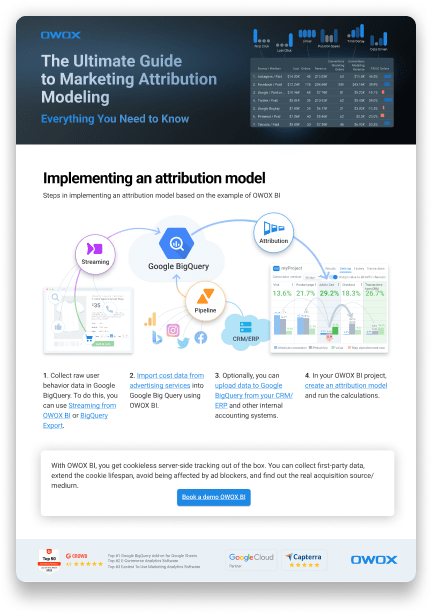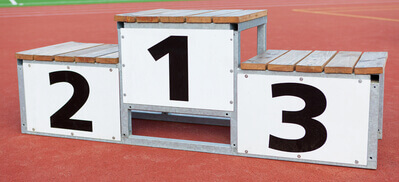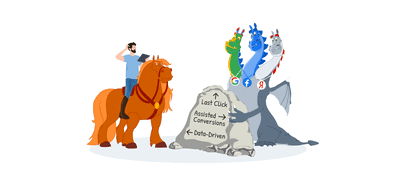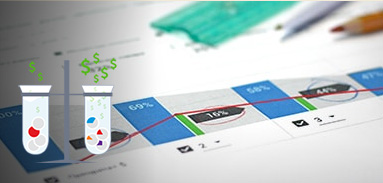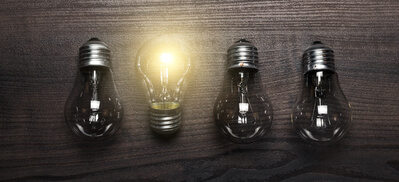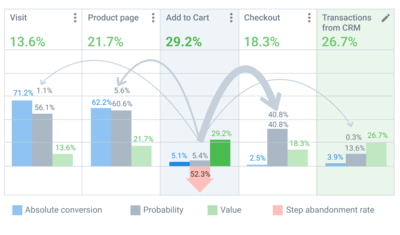Table of contents
What is Machine Learning Full-Funnel Attribution & How to Get Started
Ievgen Krasovytskyi, Head of Marketing @ OWOX
Vlad Flaks, CEO @ OWOX
The attribution model used in your project is the linchpin of assessing your marketing channel (advertising, email marketing, organic search, etc.) performance and optimizing your marketing budget.
This is where Full-Funnel Attribution comes into play. Machine Learning Funnel-based attribution is an advanced algorithmic model that assigns credit to every touchpoint a customer interacts with throughout their journey, from awareness down to conversion.
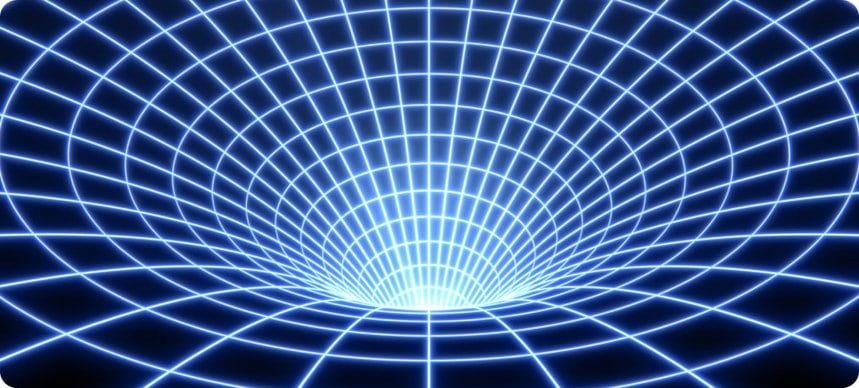
By viewing the entire funnel, you gain a comprehensive understanding of how different marketing strategies contribute at each stage of the funnel to the final conversion.
The quality and reliability of your attribution model, especially when considering ML Full-Funnel Attribution, directly impact the execution of the marketing and sales plan and overall business expansion.
An inaccurate attribution model can lead to unforeseen spikes in CPA or sudden decreases in ROAS while managing your advertising initiatives.
It's crucial to understand that the importance and influence of Full-Funnel Attribution lies in its holistic view of the customer's journey. It helps advertisers pinpoint precisely where their efforts are most effective, ensuring that every dollar is spent wisely and allocated optimally.
In one of our previous articles, we delved into the limitations of the most common standard attribution models and data-driven attribution in particular. Yet, in this piece, we'll explore the advantages & benefits of the attribution model rooted in insights about a customer’s journey through the conversion funnel.
Embracing a Full Funnel Attribution approach will empower you with a balanced evaluation of advertising and marketing campaigns, evaluating their collective impact.
Note: This article on ML Funnel-based Attribution Modelling was published in 2017 and is updated with new context to suit the current state of marketing analytics and trends in 2023.
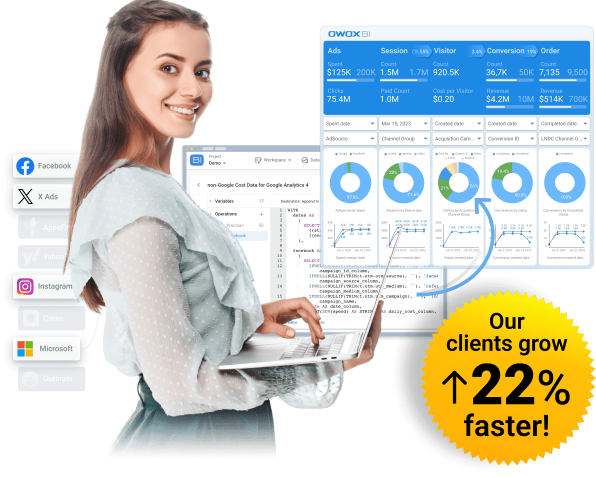
Get the reports you trust
Discover the attribution model that is perfectly aligned with your business goals. Book a demo and find out how to analyze your performance from different angles and grow.
Single Touch Attribution Challenge
Even in Google Analytics 4 reports, you can easily see that only a minority of customers place orders during their first session on the website. This highlights the intricate journey customers undertake before making a purchase decision.
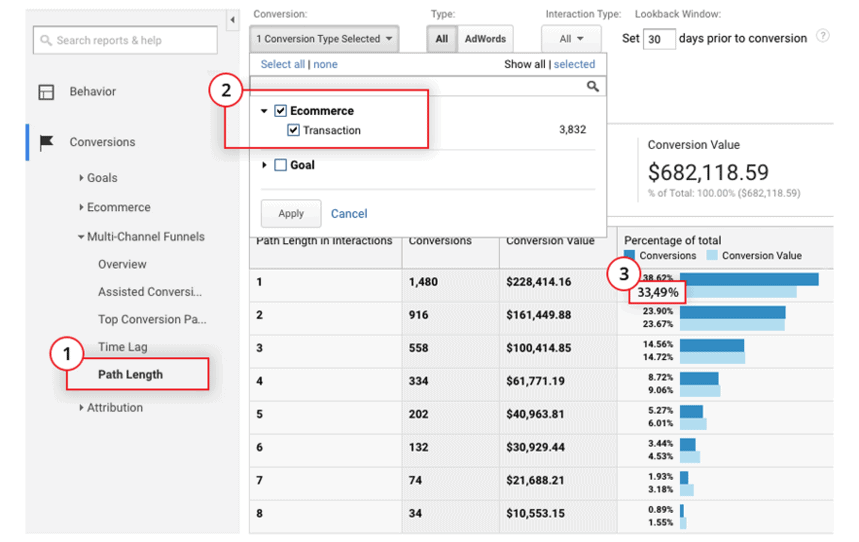
The current marketing is omnichannel. Each customer interacts with the business multiple times - Facebook ad here, Google retargeting there, then an email about a new promotion campaign, a TV ad, or a billboard on a highway.
The Need for Comprehensive Session Evaluation
To accurately distribute the value of each particular order (whether it's income or revenue), it's essential to assess every session of a buyer, not just the first or last one. By doing this, you can delve deeper into the effectiveness of your advertising campaigns. The approach is simple: group sessions that are linked to the same advertising campaigns.
Multiple Advertising Campaign Interactions
It's a common scenario where a user interacts with several advertising campaigns before placing an order. In such cases, each of these campaigns must receive a fraction of the order value, reflecting its contribution to the final purchase.
Determining Value Distribution Across Sessions
The central challenge remains: how to allocate the value of a specific order among the sessions that played a role in the purchase? This distribution isn't just about acknowledging the sessions but understanding the significance of each in the conversion process.
Solutions for Effective Full-Funnel Attribution
To solve the attribution challenge, let’s remember that an order is not a goal in and of itself — there is a conversion funnel in any business. For example, the following steps are usually identified for online stores: useful visit, product page view, adding to the cart, and placing an order. A useful visit is a visit during which a user has viewed 2 or more pages or performed an action. Such visits do not increase the Bounce rate.

Breaking Down the Conversion Funnel for Online Retail
The conversion funnel for an online store can be broken down into distinct steps. Each step plays its own role in guiding the customer towards making a purchase.
Varied Efficiency of Advertising Campaigns
Advertising campaigns don't have a uniform impact across the funnel. Their effectiveness varies depending on the stage. For instance, display advertising shines in drawing new visitors during the funnel's initial stages. In contrast, retargeting excels at bringing back previous visitors, and emails serve as a potent tool to spur purchases.
Methodology of Attributed Value Calculation
Therefore, it’s necessary to evaluate each step in the conversion process, not only the final one (ie. a purchase). This will allow for calculating the value of even those sessions during which orders weren’t made, but which helped move onto the next step.
The calculation procedure is the following:
Calculating the value of the progression through each step of the funnel.
Evaluating the sessions that helped move through the step, considering the value of the step.
Grouping the sessions by advertising campaigns and obtaining the value of the campaigns.
Now, to determine the value of progression through the funnel steps, let’s remember one more important detail — not all steps are equally easy to move through. For example, the image below shows that the probability of the Product Page View is higher than the Adding to Cart. The probability (highlighted in red) shows the proportion of users who progress to the next step from the previous one. The more difficult to move through this step, the lower the probability, and consequently, the higher the value of the session that helped to do it.

Here and below, for more clarity, the calculations are given for one of the thousands of possible funnels.
Of course, on any website, there are hundreds of user segments, and the probabilities of progression within the funnel are different for each of these segments. For example, the probabilities differ depending on the users’ location and type (new or returning).
It’s important to use only users’ properties in setting up funnels. It would be a mistake to use session properties (eg. device type) or advertising campaigns (eg. keyword). The reason is that one user may use multiple devices on their journey to make an order, or visit the website from different keywords. For us, it’s important to compare the efficiency of using an advertising budget across different advertising campaigns.
The value of steps, based on the probability of progression through the step, can be calculated by a few different methods. After hundreds of experiments, we chose the method which has proven a very good resistance to noisy data, and excellent results even with projects with a small number of visitors. Noisy data is corrupted or incomplete data in web analytics systems. If not properly processed, this data may lead to less accurate conclusions.
The method is that each step of the funnel gets a score that equals 1 minus the probability of the progression through the step. The lower the probability, the higher the score the step gets. The value of the step is calculated as a proportion of its score in the total score of all the steps:
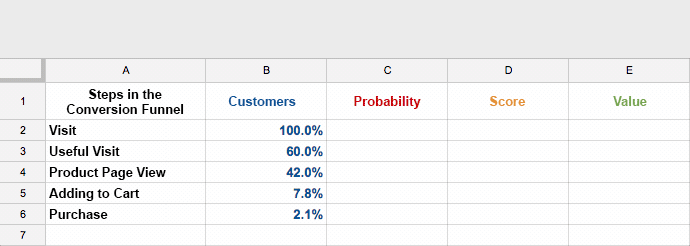
Please note:
All the calculations are based on real customer behavior and will differ for each particular website and customer segment. This eliminates human error which might occur if the attribution model is based «on feelings».
The lower the probability of moving on through a certain step, the higher the value assigned to this step. In our case, the Adding to Cart step, which is the most difficult for users to move through, got 36% of the total order value.
The total attributed value is always 100%. In contrast to the assigning of value with the help of associated conversions, or individual attribution models, we do not distribute more value than we have obtained.
It’s easy to note that the probability of a Useful Visit equals 1 minus the bounce rate. Therefore for segments of first-time buyers, the value of the first visit is higher than for returning buyers. This is fully consistent with the interests of business.
In the image below, the numbers highlighted in green show the portion of value for progression through each of the steps in the funnel.

Now that we know the value of each step of the funnel, we need to evaluate each session. This is simple: the value of the session is the sum of the values of steps that were passed through for the first time during this session.

The value is only assigned to all the sessions that helped a user move on through one of the steps in the funnel, with the whole journey resulting in a purchase. Knowing the source of each session, we only need to group the sessions by advertising campaigns. As a result, we’ll obtain the value of advertising campaigns, considering their impact on users’ progression through each step in the funnel, not only the final one.
Results and Benefits of ML Full-Funnel Attribution
The value (profit or revenue from orders), assigned to advertising channels as a result of implementing ML Funnel-Based attribution, will be different from the results of the Last Non-Direct Click attribution model.

Why the Difference?
The reason is obvious — with Last Non-Direct Click attribution, the order value was attributed to only one session. For example, if a user first visited a website through the Display channel, then returned and found the product thanks to retargeting, and then completed the purchase by clicking a link in an email, the Email channel got 100% of the order value. With ML Funnel Based attribution considering the impact on the conversion process, the value will be distributed across channels that drove the user to the purchase on each stage of the funnel.
The difference in the attributed value will be even greater if you build reports for advertising campaigns, not channel groups:
Why the Difference?
The reason is obvious — with the Last Non-Direct Click attribution, the order value was attributed to only one session. For example, if a user first visited a website through the Display channel, then returned and found the product thanks to retargeting, and then completed the purchase by clicking a link in an email, the Email channel got 100% of the order value. With ML Funnel-based attribution considering the impact on the conversion process, the value will be distributed across channels that drive the user to the purchase at each stage of the funnel.
Diving Deeper into Campaign-Level Reporting
The difference in the attributed value will be even greater if you build reports for advertising campaigns, not channel groups:
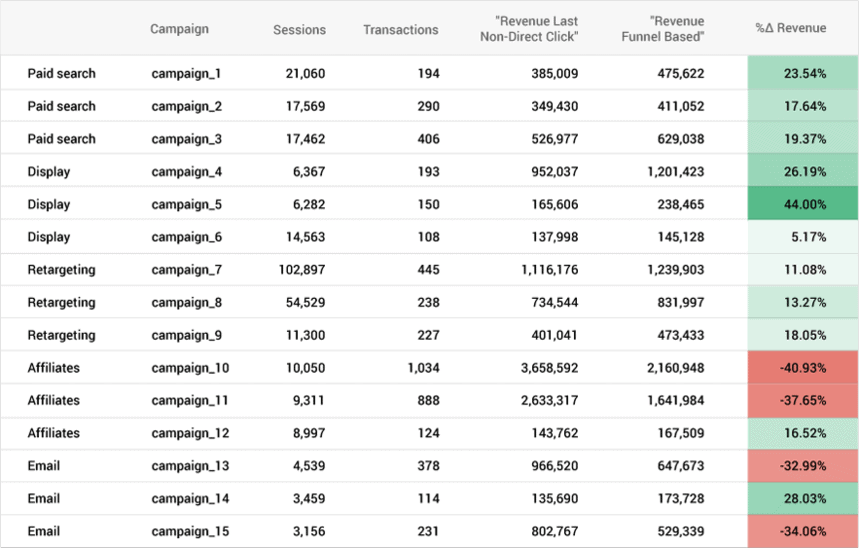
The reason for the greater discrepancy is that campaigns within a channel may affect the funnel in different ways and compensate each other. With campaign-level reports, the difference will immediately become obvious.
Implementing ML-Based Full-Funnel Attribution
Let’s talk about collecting and combining data. This material will be useful for analysts and technical experts.
In order to implement the attribution model, you need to collect the following data in Google BigQuery:
Transactions.
User actions from the very first interaction with the advertising up to the transaction
Online advertising costs.
Transactions
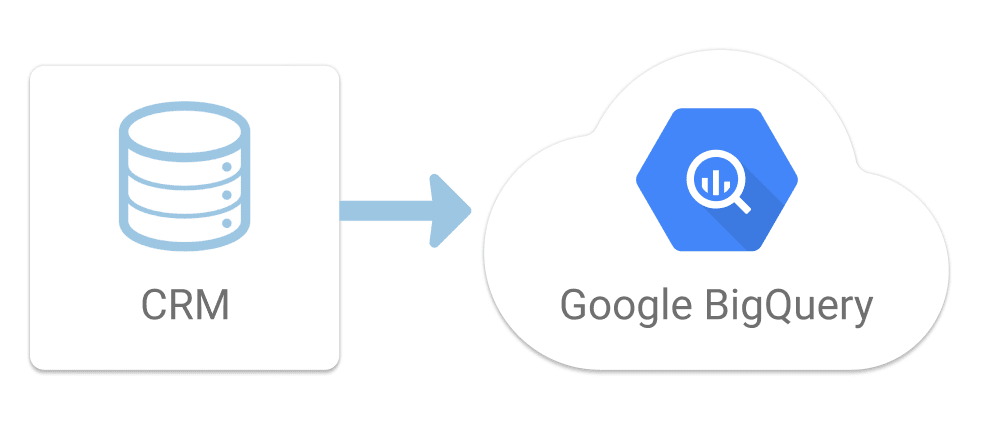
CRM has definitely the highest quality of transactional data. Unlike Google Analytics, CRM has information about:
orders that were placed not through the site. This is important for many types of businesses:
multichannel retailers, who receive more than half of their income from brick-and-mortar stores or from a call center;
banks, insurance companies, and b2b-companies that only accept applications online and their real value clears up after some time;
subscription services, that charge users regularly;
margin rather than revenue from the transactions. If you sell physical goods, the margin probably differs depending on the category. It might be difficult to transfer margins together with order information because this data is sensitive and becomes known after the product was purchased;
the order status. A certain share of orders, that is shown in Google Analytics, can be canceled or fraud;
all online orders. It is known that up to 30% of the orders don’t reach Google Analytics 4 reports because of the page load speed or the nature of JavaScript.
You can use libraries or software tools to automate data transfer from your CRM / CMS to Google BigQuery:
- OWOX BI no-code integrations
Upload files in CSV and JSON format using the command line
The big advantage of Google BigQuery is that your IT department can easily choose the most convenient way for them and import data in any format. It frees you from worrying about the correct field names or custom dimension indexes. It will save you time on integration and your energy to persuade the IT department to make this integration.
If the data you need is stored in different services, you can download it through independent pipelines. For example, the order status and margins of sold goods. The data structure and field names can also be arbitrary, the only thing you need is the keys to merge them.
Creating a data pipeline in OWOX BI, you can immediately get the recommended data structure and use it as a basic.
Even if you can not automate the import of transaction data from CRM to Google BigQuery you have two options to take advantage of ML funnel-based attribution:
You can attribute the value of the transaction, collected by Google Analytics 4 or another tracking system such as OWOX BI Streaming, without involving your IT department. In this case, you won’t be able to consider the order completion rate, refund rate, and gross margin, but you will see how much the ROI of different channels will change when you take into account the contribution of each of the visits before ordering.
If you can export the necessary information from your internal cms / erp / crm, for example, for one month, then using our FREE Reports Extension for Google Sheets you will be able to send the data into Google BigQuery and use it for calculations. In this case, the data will not be updated automatically for future periods, but you’ll see how much the ROI of different channels will change when you consider the order completion rate and gross margin.
The result of your efforts is the table in Google BigQuery containing the information about transactions that your finance department can trust.
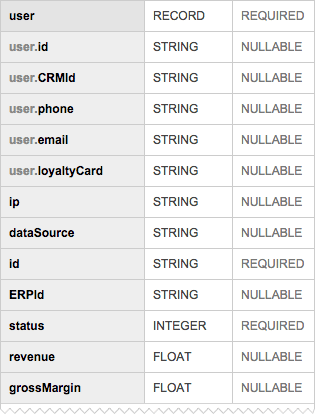
User behavior from the first interaction with the ad up to the transaction
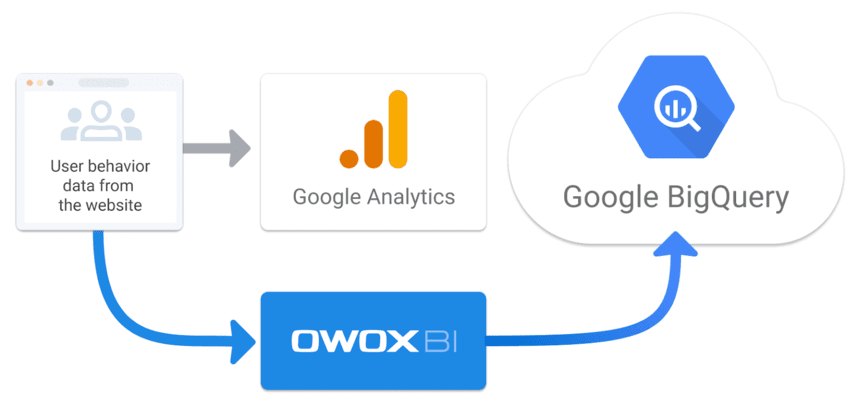
User actions — this is what brings together the efforts and the results, advertising costs, and transactions. The accuracy of the attribution model depends on the completeness and quality of this data. The single fact of the visit from a particular source is not enough to evaluate the efficiency of the actions that took place in the session.
Therefore, you should be collecting all the information about user activity in the data warehouse such as Google BigQuery. This data should be unsampled and precise up to each event or hit.
You can get the information in two ways:
You can activate the standard Google Analytics 4 export to Google BigQuery.
Or use OWOX BI server-side cookieless streaming to collect raw unsampled user behavior data in Google BigQuery.
The most important thing here is that you will get raw and unsampled data about all user actions in a single storage.
The result of this stage is one more table in Google BigQuery.
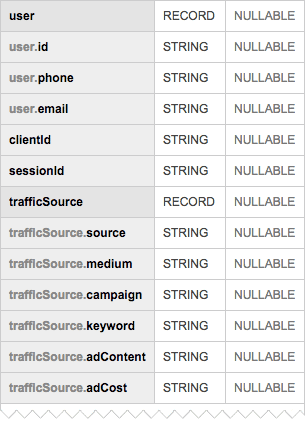
Advertising costs
The most convenient way to import online advertising costs is directly from the advertising platforms into Google BigQuery.
Set up the automatic cost data import from any of the advertising services accounts (like Facebook Ads, Google Ads, Bing Ads, LinkedIn ads and so much more) into Google BigQuery. You’ve already done it, right?
Blend cost data from multiple advertising services into the same structure with a no-code transformation template.
At least once a month upload advertising costs of your business-specific sources (such as affiliate commissions) via free OWOX BI Reports Extension. They will be automatically allocated for each day of the month proportionally to the number of visits from that particular traffic source.
The last thing you have to do is activate the pre-built transformation template in OWOX BI Transformation to calculate all of the attribution models you need.
Results
As a result, all the necessary data for the calculation of Machine Learning funnel-based attribution is collected in Google BigQuery and is available for reporting.
Note: We also have the Looker studio templates for one-click visualizations based on your own attribution model data.
Key Takeaways
The described attribution method is based on two beliefs:
The goal is to lead buyers throughout the conversion process, to a purchase.
The more difficult it is to move through a certain step of the funnel, the more valuable for the business it is moving through this step.
It should be mentioned that, although calculations for one segment or one order can be easily made in Excel or Google Sheets, you won’t be able to make such calculations for all of the website visitors.
The reason is, that there may be hundreds of different segments on a website. There may not be enough information to obtain statistically significant results for each segment, even on high-traffic websites.
Therefore when implementing the attribution model, one can not do without programming. In our experience, OWOX BI is best suited for comparing attribution models in just a few clicks and selecting the one that’s gonna suit your business goals. OWOX BI allows you to collect raw unsampled data even in the cookieless world.
What’s next?
It’s time to evaluate the additional value of your very own attribution model.
FAQ
-
What are the benefits of the funnel-based attribution model?
Funnel-based attribution model provides more accurate and actionable insights on how to optimize marketing and sales efforts, improve customer experience, and increase revenue and ROI. -
What is the funnel-based attribution model?
A funnel-based attribution model is a data-driven approach that assigns credit to each touchpoint of a customer journey, according to its relevance in driving conversions. -
What are the limitations of the funnel-based attribution model?
Funnel-based attribution models can be complex and time-consuming to implement and maintain, and may not capture the full range of customer interactions and influences that lead to conversions. -
How does funnel-based attribution differ from other attribution models?
Funnel-based attribution differs from other models by focusing on the entire customer journey, assigning value to each touchpoint based on its relevance in driving conversions. In contrast, other models might give full credit to the last touchpoint or distribute credit equally among all touchpoints. -
Why is it important to consider the entire customer journey in attribution?
Considering the entire customer journey is crucial because customers often interact with multiple touchpoints before making a decision. By evaluating the entire journey, businesses can understand which touchpoints are most influential and optimize their marketing strategies accordingly. -
How does funnel-based attribution impact marketing budget allocation?
With insights from the funnel-based attribution model, businesses can allocate their marketing budget more effectively. By understanding which touchpoints contribute most to conversions, they can invest more in high-performing channels and campaigns, ensuring better ROI. -
Is funnel-based attribution suitable for all types of businesses?
While funnel-based attribution provides valuable insights for many businesses, its effectiveness can vary based on the business model, customer journey complexity, and available data. It's particularly beneficial for businesses with longer sales cycles and multiple touchpoints. -
Can funnel-based attribution be integrated with other marketing tools?
Can funnel-based attribution be integrated with other marketing tools?
